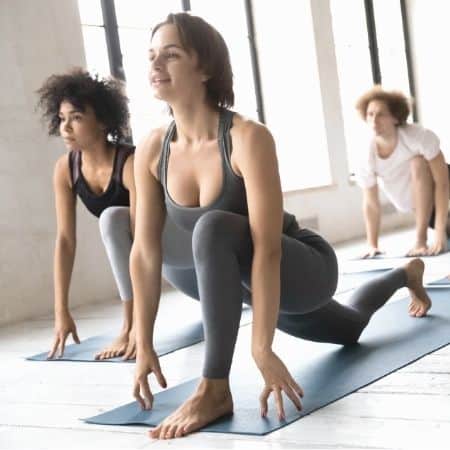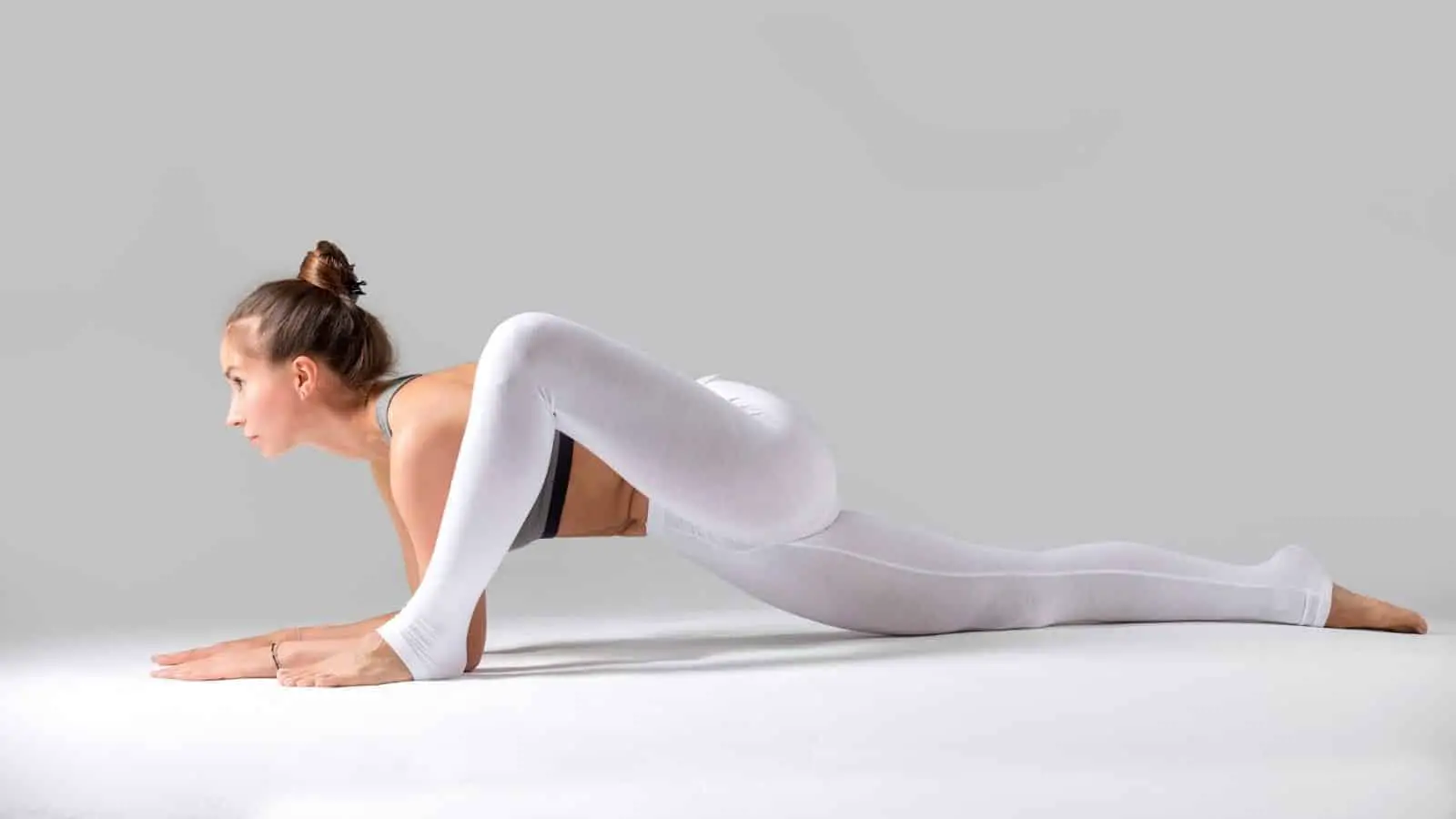In the last 30 years, yoga, an ancient tradition, has become a global phenomenon, with millions of people realizing its health benefits. From increased strength and flexibility to an improved sense of peace and well-being, yoga can profoundly impact the lives of its practitioners. One pose that many people enjoy working into their routine is the Lizard Pose.
To get into Lizard Pose, you should go slow and give your body time to ease into the position, especially if you are new to yoga. With this guide, in a few steps, you will have the movements down and will be able to incorporate Lizard Pose into your daily routine.
This article will provide a step-by-step guide on how to get into Lizard Pose, also known as Utthan Pristhasana, and briefly examine the importance of proper breathing techniques in this ancient practice. We will also outline the different muscles and parts of your body that can benefit from this pose. If you’ve ever wondered how to get into Lizard Pose, read on.
Lizard Pose in 7 Steps
- As with all yoga poses, before you attempt Lizard Pose, be sure to warm up and get your blood flowing. Mountain Pose, Forward Fold, Child Pose, and Downward Dog are good poses to incorporate into a yoga warm-up.
- Begin in Downward Dog, with the palms of your hands and soles of your feet flat on the ground. Your butt should be up in the air, with your back straight and your chin tucked into your chest. Be sure to keep your head in line with your spine and your feet hip-width apart.
- Slowly bring your hips down and move your shoulders over your hands while keeping your arms straight. Step your right foot forward until it is parallel with your hands and next to your right hand’s outside edge. As you do this, you will simultaneously move onto the ball of your left foot.
- Bring your left knee to the ground slowly, and press your hips down while keeping your back and arms straight. As you move your knee to the ground, you should transition your weight off your foot’s ball, extending it behind you with the top of your foot on the ground and your toes pointing back. Make sure your head is aligned with your spine, and you are looking just ahead of your hands.
- This is where you will feel the pressure in your hips. Slowly bring your forearms to the ground, making sure to keep your back straight. Keep your head in line with your spine and slightly facing forward.
- Slowly move your weight back onto the ball of your left foot and straighten your left leg. You should feel your hips open up. Your left leg should align with your back. Make a straight line all the way up through your spine through the top of your head.
- Hold the pose for several breaths and reverse the steps until you are back in the starting, Downward Dog position. Repeat the movements for the other side.
Modified Lizard Pose

If you are new to yoga and don’t feel comfortable with this particular pose, you can modify Lizard Pose. Skip the fourth step and keep your palms on the ground. The position’s benefits will still be felt, and you can slowly progress into the full pose over time.
Many people also have particularly tight hips, and while this pose is great to stretch these muscles, it may be difficult at first. Some people choose to place blocks under each forearm, adding height that eases the pressure on tight hips without reducing the pose’s effectiveness. Once again, after practice, you will eventually be able to complete the full, unmodified position.
Pranayamas in Yoga
At the heart of all, yoga is proper breathing. Known as three-part breathing, or pranayamas in Sanskrit, this technique refers to the abdomen, diaphragm, and chest. Each breath should fill your lungs with air starting in your abdomen, filling your ribcage, and finally, your upper chest. The exhale reverses this order until your lungs are empty of air.
There are a number of pranayamas, but this technique, in particular, will allow you to more fully benefit from yoga, as this oxygen will allow a deeper and more complete stretch in your muscles. This breathing element is also connected to the mental benefits of yoga as a way to relieve stress and promote inner tranquility.
Benefits of Lizard Pose to Muscle Groups
If you have ever performed Lizard Pose, then you know that it is a great stretch for the hips, but which muscle groups, in particular, are you stretching with this pose?
Hip Flexors
The hip flexors are made up of a group of muscles at the top of your hips. The psoas major, minor, and iliacus are essential for many lower body movements, including walking, kicking, and climbing. They also play an important role as the interface between the upper body and the lower body.
Tight hip flexors can lead to a reduced range of motion, lower back problems, and reduced mobility. Lizard Pose is a great way to keep these vital and often overlooked muscles flexible, strong, and injury-free.
Hamstrings
The hamstrings are some of the larger muscle groups in the body. They are composed of the biceps femoris, semitendinosus, and semimembranosus muscles. These muscles are essential for walking, running, and jumping, and their injury can leave you out of commission for weeks. These injuries are especially common in athletes, although these large muscles respond well to nonsurgical treatments.
The most important way to reduce your odds of hamstring injuries is proper stretching, and Lizard Pose is an excellent position that will improve flexibility in these muscles.
Quadriceps
The quadriceps are another large muscle group in the legs. They are made up of the rectus femoris, vastus lateralis, vastus medialis, and vastus intermedius. In conjunction with the hamstring, the quadriceps are responsible for much of our everyday movement, like running and walking. Similarly to the hamstrings, injuries in the quadriceps are most commonly caused by a lack of flexibility and overexertion.
Lizard is an excellent way to keep this large muscle group flexible, and you will feel the greatest pressure on these muscles in your lead leg as you bring your foot forward towards your hands.
Sciatica Relief
The sciatic nerve is a large nerve running down your body, from your lower back, buttocks, and leg. Inflammation of the nerve leads to a condition known as sciatica that 40% of adults will experience at some point in their lives. Yoga is a common treatment for this near debilitating condition, and Lizard Pose is particularly useful.
The way the hips and pelvis are stretched during Lizard Pose can relieve pressure on the sciatic nerve, and regular yoga sessions can greatly improve flexibility and strengthen these muscles.
Conclusion
The mental and physical health benefits of yoga have been known for centuries. While it was once relegated to hippies and gurus, the world now recognizes the massive potential yoga has for physical fitness. Lizard Pose is just one of the dozens of poses that make up the discipline.
Whether used in a yoga routine or as a stand-alone stretch for sciatica, Lizard Pose is a great way to improve flexibility and strength in some of the most important human body muscles.








